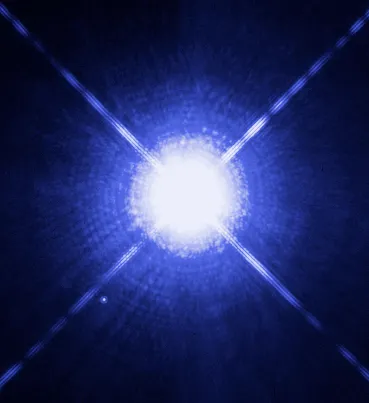Monday Bites: Who Let The Dogs Out?
Who Let The Dogs Out? The Dog Star, of course.
 |
| Credits: NASA, ESA, H. Bond (STScI), and M. Barstow (University of Leicester) |
Sirius is the brightest star in our night sky. Even under Bortle 9 skies, through the worst light pollution imaginable, it's the only one that shines. In this Hubble image (taken on October 15, 2003), Sirius, better the Dog Star, is seen with its tiny companion. Sirius or Sirius A is a main sequence star, twice as massive as the Sun and 25 times more luminous. With its visible surface boiling at nearly 10,000 K, Sirius A falls a click short of being twice as hot as the Sun. At 8.6 light-years from Earth, the Sirius system comes fifth on the list of nearest stars. Sirius B, the faint binary companion, hiding away in the glare of its primary, is a white dwarf — the remnant core of a spent main sequence star that had erupted in a supernova some 120 million years ago. Sirius B packs the mass of the Sun in a volume smaller than Earth. Therefore, its density beats human standards. Its monstrous gravitational field exceeds 350,000 times that of Earth! To drive that closer to home, if you could stand on its surface, which again burns at 25,000 K — five times hotter than the surface of the Sun, you would feel your weight increase by 25 million times!
This photo was officially released by NASA on December 13, 2005.


Comments
Post a Comment